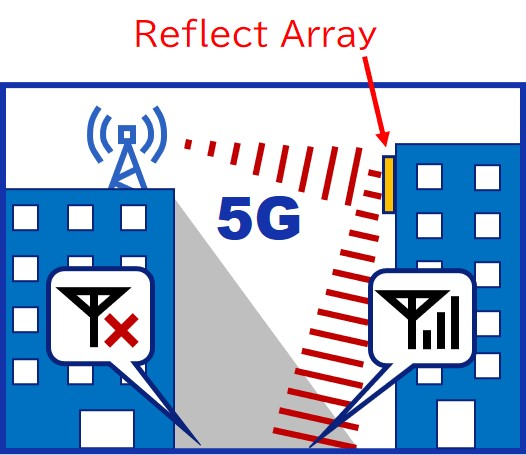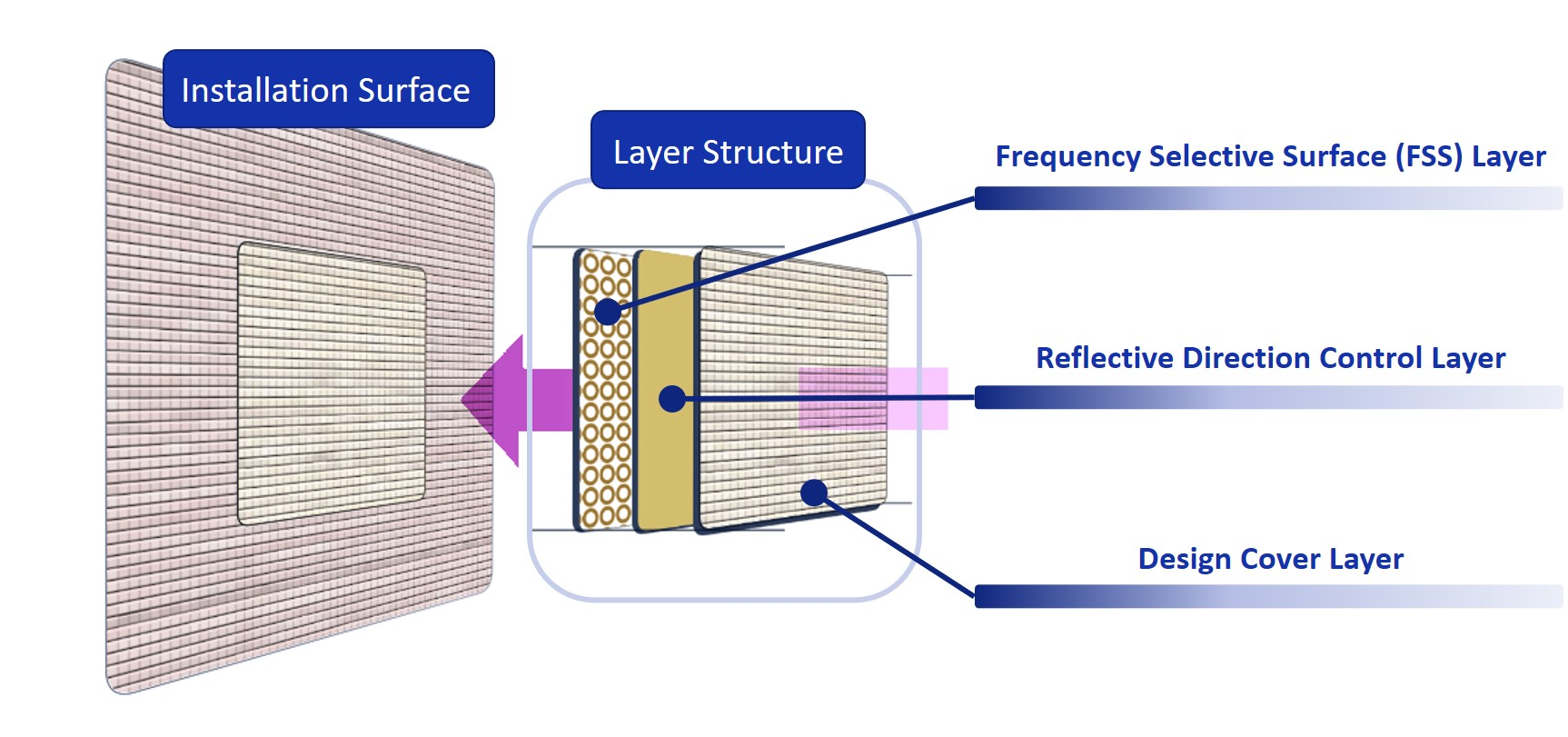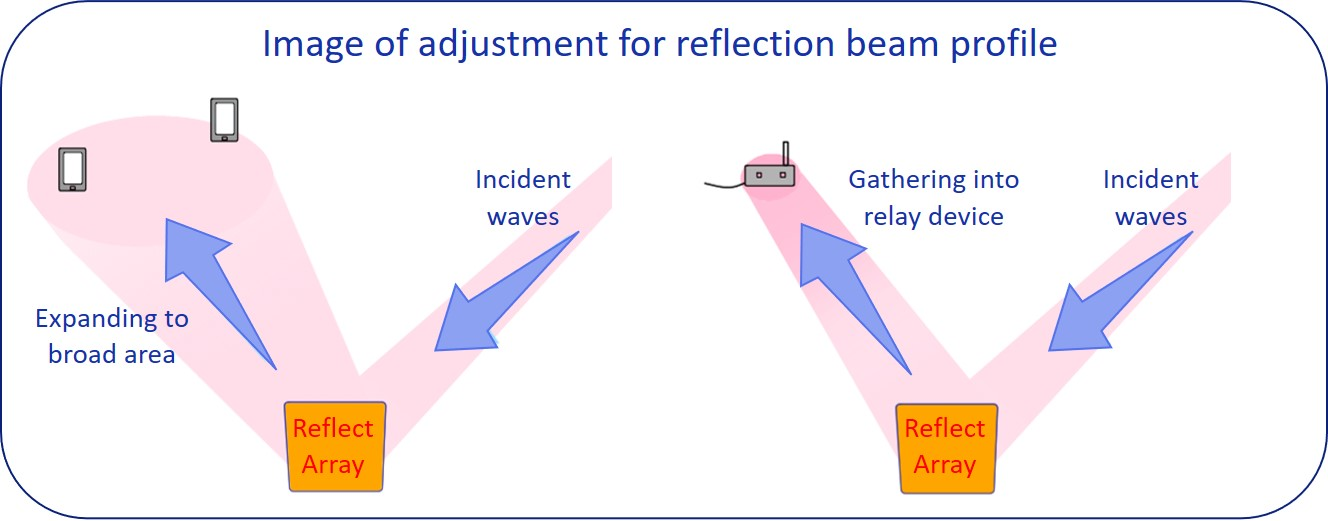


DNP: Developed 5G reflect array: Expanded millimeter wave reach area
-Avoid obstacles and deliver radio waves-
Dai Nippon Printing (DNP):
Reflects millimeter waves of 5G communication.
We have developed a reflect array that expands the reach area by reflection.
We support the spread of 5G communication networks using millimeter waves.
5G Millimeter Wave Reflect Array:
5G millimeter wave,
Reflects in the intended direction,
Avoid obstructions.
This radio wave reflector is different from a metal reflector that simply specularly reflects radio waves like a mirror.
Features of Reflect Array:
The feature is that radio waves of a specific frequency can be reflected in any direction.
By reflecting radio waves well,
Until now, it was difficult for 5G millimeter waves to reach,
Radio waves can also be delivered between buildings.
It is possible to expand a high-speed communication network using 5G millimeter waves.
Field of use:
This radio wave reflector can be used even outside the city
A factory with many radio wave shields,
Exhibition hall with changing layout,
A stadium that distributes information only in the area,
It is expected to be used in amusement facilities.
iPhone Mania
https://iphone-mania.jp/news-394534/
DNP Develops Reflect Array to Expand 5G Coverage Area
DNP Group Tokyo,
August 31, 2021.
Dai Nippon Printing Co., Ltd. has developed a Reflect Array
that flexibly reflects the millimetre waves used in fifth generation (5G) mobile communications systems to expand coverage area.
Compared to general metal reflectors,
the new product is capable of reflecting millimetre waves in a more targeted manner.
As a result,
there are fewer restrictions on installation, making it possible to improve the communications environment in locationswhere radio waves have been difficult to reach, such as those in the shadow of buildings.
In addition,
the new product boasts superior design features allowing it to respond to various installation environment considerations.Background
The 24GHz and above radio waves used in the high-speed large-capacity communications of 5G
are higher frequency milliwaves than those used in 4G, and maintain a larger information capacity.
At the same time,
they are characterized by strong straightness properties and short reach, leading to radio waves being blocked in areassuch as in the shadow of buildings
making it difficult to ensure communication quality.Also, when adding base stations and relay equipment to resolve this issue, new challenges emerge,
such as large costs and the difficulty of securing installation space.
What’s New | DNP Group